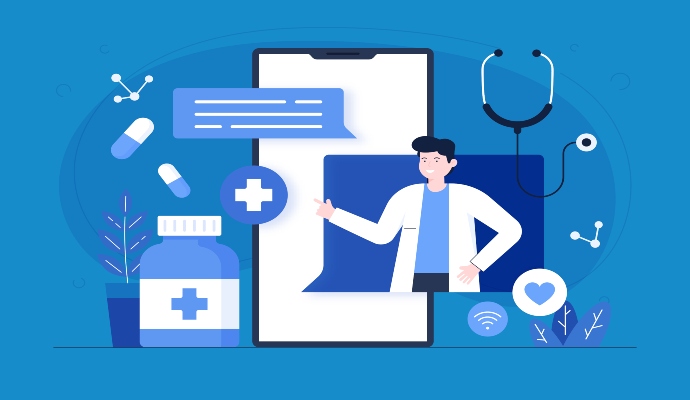Telehealth enables opioid use disorder treatment during pregnancy
New research reveals that a majority of pregnant people remained engaged in telehealth-enabled OUD care, with most carrying to term.

Source: Getty Images
- Telehealth is an effective treatment option for opioid use disorder (OUD) during pregnancy, according to a new study published in JAMA Network Open.
The opioid crisis has raged in the United States since the 1990s. An estimated 2.7 million people, 12 or older, reported having OUD in 2020, data from the Centers for Disease Control and Prevention (CDC) shows. The disease is chronic and deadly, with more than 75 percent of drug overdose deaths in 2021 involving an opioid.
Opioid exposure during pregnancy is linked to poor health outcomes for the birthing person and the infant, including maternal death, poor fetal growth, and preterm birth. While telehealth is increasingly being employed to address OUD, the study authors noted that “outcomes for pregnant populations within dedicated telehealth settings have not been reported.”
The researchers conducted a cohort study assessing the efficacy of a low-barrier, multistate, telehealth-based addiction treatment program in the US. They used EHR data to identify pregnant patients, 18 and over, diagnosed with OUD and receiving buprenorphine or buprenorphine and naloxone treatment between January 1, 2018, and December 31, 2022.
They included 94 individuals in the study, of which 74 were covered by Medicaid, and 21 lived in rural zip codes. Forty patients were pregnant during their initial telehealth OUD appointment, while 54 became pregnant after establishing care.
Overall, 75 patients (79.8 percent) received continuous OUD care through telehealth during their pregnancy. Thirteen patients (13.8 percent) were lost to follow-up, and six (6.4 percent) were discharged due to administrative or financial reasons.
Most patients (82.6 percent) carried to term, while 13 percent experienced a spontaneous termination and 4.3 percent a medical termination.
Of those who received continuous OUD care, 8 percent transferred to in-person care with prenatal clinicians. Among the patients who continued with telehealth-enabled OUD care, 94.2 percent continued care through six weeks post-pregnancy, and all patients tested positive for buprenorphine in post-pregnancy urine drug screens.
The study also showed that patients who became pregnant once established in care through telehealth were more likely to continue virtual care.
“This study was limited by small sample size; findings may not be generalizable to other settings. Notwithstanding, our findings add to the emerging evidence supporting the effectiveness of telehealth-based OUD treatment in this vulnerable population,” the researchers concluded.
This research aligns with prior studies showing that telehealth is an effective treatment option for OUD patients with comorbidities.
For instance, a study published last November revealed that telehealth can support care for OUD patients with hepatitis C virus (HCV). Researchers enrolled 602 OUD patients with HCV from 12 opioid treatment programs that dispensed methadone in New York State from 2017 to 2022. The study participants received treatment with direct-acting antiviral medications for HCV. Researchers conducted follow-ups for two years to identify reinfections.
They found that 90.7 percent of the patients who met with an HCV specialist onsite via telehealth were cured of the infection compared to 35.2 percent of those who met in-person with a specialist offsite.
Additionally, telehealth-enabled OUD care can enhance treatment for underserved populations. A study published in October 2023 found that using telehealth to begin OUD treatment is linked to high treatment retention among Medicaid beneficiaries. Researchers assessed Medicaid claims and enrollment data from November 1, 2019, to December 31, 2020, for adults aged 18 to 64 in Kentucky and Ohio.
A total of 41,266 individuals in Kentucky and 50,648 in Ohio had a buprenorphine prescription in 2020. Of these, 18,250 in Kentucky and 24,741 in Ohio initiated buprenorphine treatment.
Among the individuals who initiated buprenorphine via telehealth in the second or third quarter of 2020, the proportion that continued treatment for at least 90 days was 45 percent in Kentucky and 28.5 percent in Ohio.
However, contradictory research questions telehealth’s efficacy in improving OUD care.
A study published in January 2023 found no evidence that telehealth increased access or improved the quality of OUD treatment.
Researchers assessed data for 11,801 patients who received treatment from 1,768 clinicians. They observed that although telehealth for OUD increased between the pre-pandemic and mid-pandemic periods, the total visit volume for OUD for each patient episode stayed stable among clinician groups with high and low telehealth use rates.
There were also no reported changes in the initiation of OUD medications between the pre-and mid-pandemic periods.
